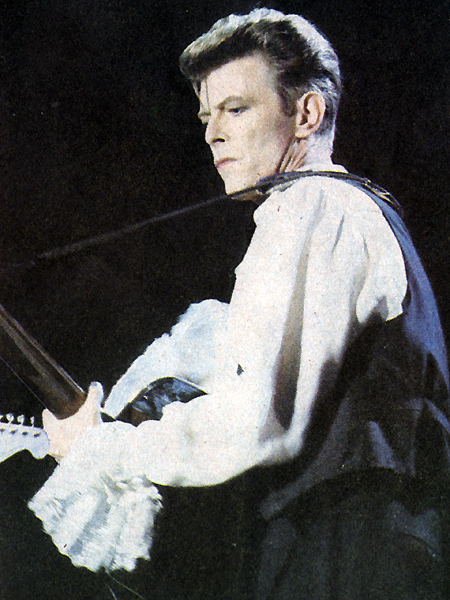- in Production by Bobby Owsinski
Producer Ken Scott On Recording David Bowie

I was interviewing engineer Kevin Killen for my podcast recently and he spoke about recording and mixing David Bowie’s final album (you can listen to that here). That got me looking back to Ken Scott’s Abbey Road To Ziggy Stardust autobiography at some of the technical data on how he recorded Bowie through the 4 albums that they did together (including the seminal Ziggy Stardust And The Spiders From Mars).
Since it’s been 8 years since Ken and I wrote the book, I had to do a bit a searching, but came up with a sidebar that explains how he recorded Bowie and his band, complete with the mics used and some interesting quirks about David’s vocals. Check it out.
“The setup I used for Hunky Dory was the same as for all the other Bowie albums.
Woody (Woodmansey) would always set up in the Trident drum booth. On occasion the drums were recorded in stereo, but not always. Sometimes they were all on one track with a separate kick track, and sometimes the snare was on a separate track, depending on the song. The drums mics were pretty much what I use today. Ribbon mics for overheads (either STC4038’s or Beyer M160’s), an AKG D20 on bass drum, a Sony C38 on snare (later I used a Neumann KM54 or 56), and Neumann U67’s on the toms. I would often use the original Kepex gates on the drums because they were so simple and did the job adequately.
Trevor’s (Boulder) Gibson EB-3 bass was usually DI’d.
Ronno (Mick Ronson) was a Marshall man through and through, and used a half stack (a Marshall Major 200 with a slanted 1960A cabinet) that was rarely turned up full. I would always use a Neumann U67 or 87 just in front of the speaker cabinet and occasionally a distant mic, which would be any mic that happened to be handy at the time. Mick got his sounds via a Cry Baby wah-wah pedal that he’d move slowly through its travel until he hit on the right sound for the song, and then he wouldn’t touch it again.
The acoustic guitar frequently played along with the electric rhythm guitar to give the sound of it a different feel. I usually miked it with a U67 or C12a and compressed it, sometimes quite heavily, with a UREI 176 or LA2A.
For piano I employed a three microphone technique, with two U67’s on the bass and middle strings and a KM56 on the high strings, all slightly limited with a couple of LA2A’s if stereo was required. I placed the mics in parallel directly hovering over the strings left, centre and right.
It depends on what was required and how the arrangement was written, but generally I used a mic on each section of the strings (Neumann U67s or U87s) and one C12a, if possible, for every two celli. The one thing I seem to do as standard on the violins and violas and is pull a little of the mids out, around 3.5k or 4kHz, and add a little at 10K.
And last but not least, was Mr Jones himself on vocals. David was always exceptional with his vocals, since 99% of the time it was the first take, beginning to end, with no punches. I’d get the level and he’d sing the song down and that would be it. Sure made my job easy. You’d think there was a mistake when he was laying it down, but when we’d listen to the playback we’d find that what we thought sounded odd the first time through was intentional and worked perfectly.
What I quite often did while recording David’s vocals was use an AKG C12a and a U67 and place them at a 90 degree angle to each other so he was singing in-between them. I came up with this method so I could instantly switch between the two to see which mic sounded better (and maybe even use both), instead of having him stand in front of one mic and sing a bit, then go in front of the other mic and sing a bit. It also had the added benefit of helping suppress any popping and sibilance as well. We didn’t have many tracks at that time, so even if both mics were used, they were mixed together to a single track. Unlike many other recordings of the time, we never recorded the effects because David only did one take, so there was never any time to set them up.
The album, like the others that followed, was mixed on a 20 input Sound Techniques console, using moderate board EQ, a single EMT plate reverb, and just a little compression on the overall mix. Compression came from two UREI 1176’s and two Teletronix LA2A’s. The multitrack machines were an Ampex 8 track and later a 3M 16 track. Any delay came from a Studer C37 stereo tape machine with a varispeed. “
You can read more from Abbey Road To Ziggy Stardust and my other books on the excerpt section of bobbyowsinski.com.

